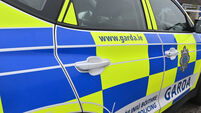Commuting times rise in every county

The Central Statistics Office has published new figures from Census 2016 which show that 2,962,550 people said they travel to work, school, or college — an increase of 9.3% on the 2011 Census findings.
It recorded 1,875,773 people commuting to work in April 2016, up 10.7% on 2011, but also found commuting times rose in every county in Ireland compared to five years previously.
The national average commuting time in April 2016 was 28.2 minutes, up from 26.6 minutes in 2011.
Commuters in counties surrounding Dublin had the longest average commuting time. Commuters in Meath and Wicklow travelled for almost 35 minutes to get to work.

Some one in 10 said they spent an hour or more commuting to work, up almost 50,000 (31%) on 2011.
Last year 81,897 parents with children under the age of 15 said they spent an hour or more commuting to work; of these, 43,372 were parents of pre-school children — an increase of 8,000 (23%) on 2011.
One in five parents of children aged four or younger in Wicklow, Meath, Laois, Kildare, and Westmeath said they had a commute of more than an hour.
The number of those leaving home before 7am increased to 365,000 (up 34%) since April 2011, with 25% of male commuters and 13% of females leaving before 7am.
The census noted large increases in bus (up 22%) and train use (19.7%), while the number cycling to work rose by 43% on five years previously.
A total of 111,436 commuters said they use the bus to get to work, compared to 63,133 rail commuters.
The figures represent only a slight increase on those recorded in Census 2011. More than 9% (174,569) of working commuters used public transport in April 2016, compared with 8.5% in 2011.
There was a significant rise in the numbers cycling to work, however.
On Census night 56,837 people said they cycled to work, up 43% since 2011. Three out of four of these cyclists were males and two-thirds of all cyclists were in Dublin City and suburbs, with 38,870 people cycling to work.
However, just 2,330 people cycled to work in Cork City and suburbs, 1,874 in Galway, 968 in Limerick, and 395 in Waterford.
Despite these increases, the car is still by far the most common mode of transport for workers, with the census recording 1,229,966, or 65.6%, of those commuting to work, doing so by driving themselves or by travelling as a passenger in a car.
The numbers walking to work increased by 4,570 to 175,080, accounting for 9.3% of the commuting population.
The census also showed that commuters in Cork had a higher dependency on cars compared to the national figures.
In Cork City and county, 155,860, or 72.8%, of all commuters travelled to work by car compared to 65.6% of commuters nationally.
While 9.3% of working commuters across Ireland used public transport, just 4.5% of those in Cork did so. Just 1.5% cycled, compared to 3% of commuters nationwide.
Outside of the workforce, there was an increase in the number of children going to primary school by car (59.8%), but a 7% drop on 2011 figures in those travelling by bus.
Those walking and cycling accounted for 25% of primary school commuters in 2016.
A notable urban-rural divide was revealed by the commuting figures for secondary school students. More than 42% of rural secondary students were reliant on the bus to get to school, compared to nearly one in five urban students.
Overall 43.3% went to secondary school by car, while 28.4% used the bus.
The bus overtook driving as the most popular means of vehicular travel for third-level students. Last year 23.5% of college commuters said they drove compared to 24% of all third-level commuters, an increase of 13.5% on the 2011 figure.
Walking was the most common means of travel to college, accounting for 26% of students.











